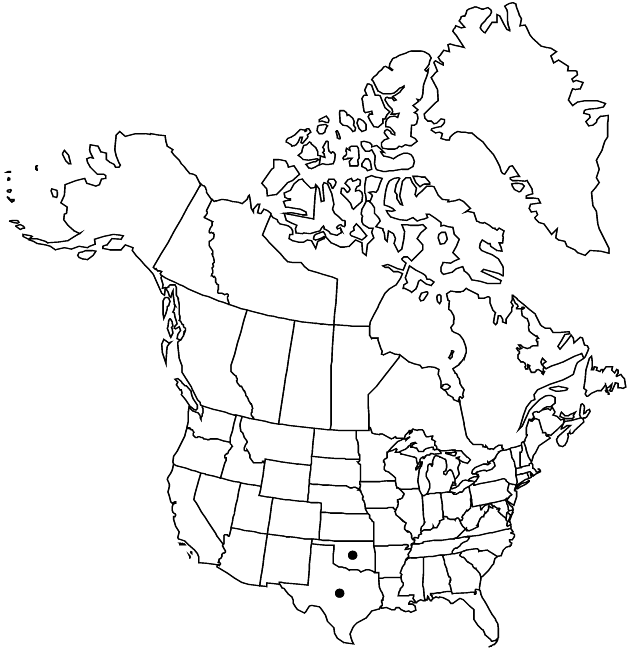Lindheimera texana
Proc. Amer. Acad. Arts 1: 47. 1847.
Revision as of 21:10, 5 November 2020 by imported>Volume Importer
Leaf blades 4–12(–18+) × 1–3(–5+) cm. Peduncles 1–3(–6) cm. Phyllaries: outer ± lance-linear to linear, 8–12 mm, scabrellous and/or hispid; inner lance-ovate to elliptic, 9–15 mm, scabrellous to glabrate. Ray laminae 10–14 × 4–9 mm. Disc corollas 3–4 mm. Cypselae 4.5–6 mm, ± scabrellous to glabrate (pappus-like processes 0.5–1 mm). 2n = 16.
Phenology: Flowering Mar–Jun.
Habitat: Sandstones, clays, alkaline soils
Elevation: 10–500 m
Distribution

Okla., Tex., Mexico (Coahuila).
Discussion
Leaves, peduncles, and phyllaries of Lindheimera texana sometimes bear stipitate glands reminiscent of glands in some members of Madiinae.
Selected References
None.
Lower Taxa
None.
